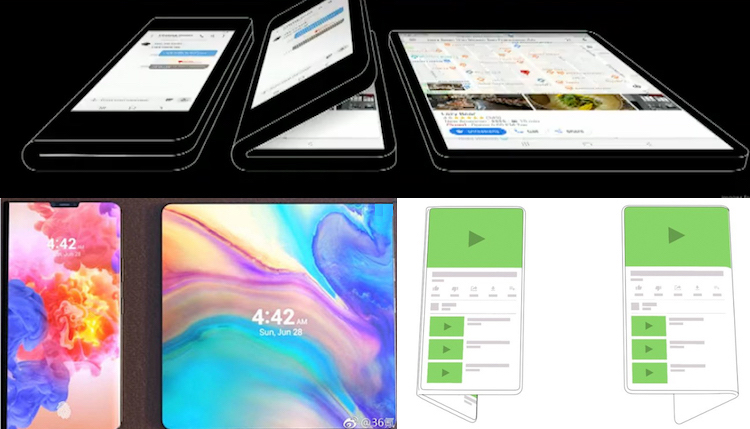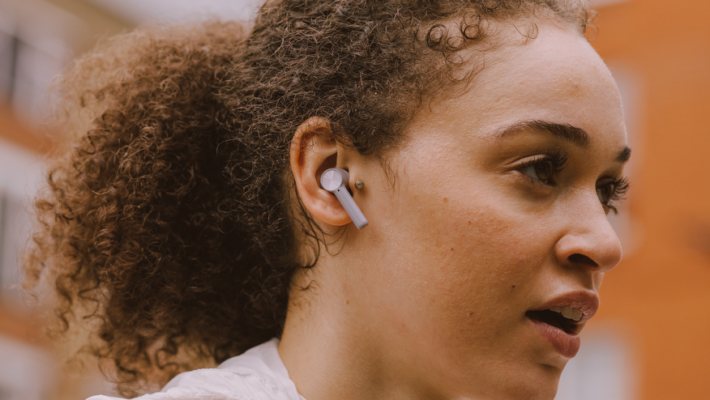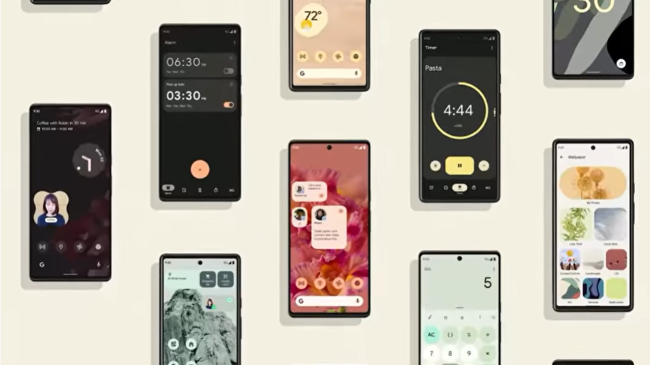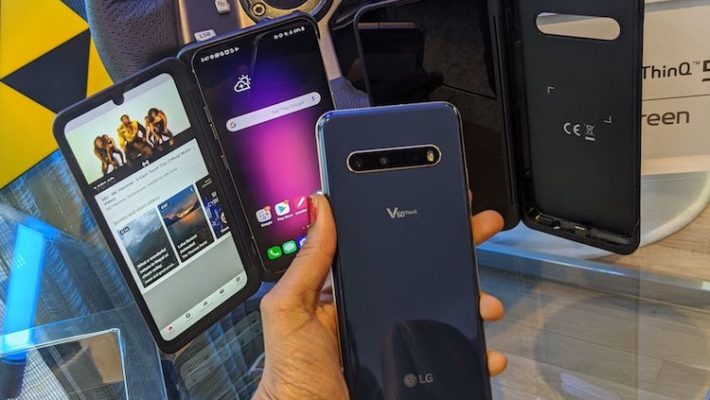Foldable phones just may be one of the big mobile trends of 2019. As the year comes to a close, we’ve already seen details about two foldable devices that are close to market release. Several other smartphone companies have also promised their own “foldables” in the coming months. Google has even pledged its software support behind the not-so-new form factor.
The end of 2018 has brought more details about foldable phones than we’ve seen in several years of rumors and speculation about the devices. Here’s what we know about the foldable phones expected to release in 2019 and beyond.
Samsung foldable phone: Galaxy F, Infinity Flex Display
Samsung shared details about its foldable phone at its Developer Conference in early November, introducing its Infinity Flex display and a disguised prototype phone. The manufacturer also shared details about its new One UI interface, which was developed to work with the foldable phone and will allow users to have up to three applications open simultaneously when the device is in tablet mode.
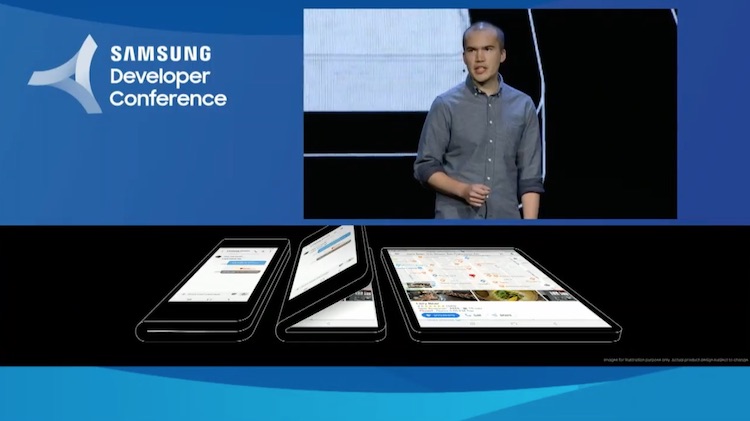
Samsung Infinity Flex
The device set up includes a 7.3-inch inner foldable display with a 4.2:3 aspect ratio, 2152×1536 resolution, and 420 dpi pixel density and a 4.58-inch cover display with a 21:9 aspect ratio, 1960×840 resolution, and 420 dpi pixel density. The device can be used as a tablet but will also fold inward like a book or a laptop to protect the inner display. The cover display can be used as a standard phone in this setup. Samsung claims its Infinity Flex display is certified to withstand hundreds of thousands of folds.
The foldable phone concept is not new to Samsung. The Korean manufacturer has been developing its product for nearly six years, having first introduced a foldable display technology called Samsung Yuom at CES 2013. Since then, rumors have circulated with each flagship release cycle that Samsung would release a foldable phone.
While development was slow, the manufacturer was constantly making progress with its technology. Devices including the Galaxy Note Edge, Galaxy Round, and Galaxy S6 Edge are all precursors to the long-anticipated foldable phone.
Rumors about the foldable phone began to heat up again in 2017. Speculations first suggested Samsung would call the device the Galaxy X, but later the device became regularly referred to as the Galaxy F. News suggested Samsung was still struggling with development and manufacturing issues, so while devices, including the Galaxy Note 8 and Galaxy S9 hit the market, the foldable phone remained under wraps.
Now, the Galaxy F is expected to be officially announced in March 2019 and may sell for approximately 2 million Korean Won or $1,770.
Royole foldable phone: FlexPai
While Samsung’s foldable phone may have been long anticipated, an obscure Chinese manufacturer called Royole has the accolade of introducing the first foldable phone to the public. The manufacturer introduced its device, called the FlexPai just one week prior to the Samsung Developer Conference.
This device features a 7.8-inch external foldable display with a 4:3 aspect ratio and 1920 x 1440 resolution. When in its folded position, each side of the display acts as a separate screen and either side can be used for taking phone calls of capturing photos. The middle part of the screen that bends is also a functional display, which serves as a notification center for incoming calls, emails, and messages. The device can also fold inward to close the display around a protective shell.
Meet the Royole FlexPai, a foldable phone you can order now:
💰 Starts at $1,318
📱 7.8-inch AMOLED
📷 16-megapixel wide-angle camera
📸 20-megapixel telephoto lens
🧭 16:8 or 16:9 screen
🙌 More to come pic.twitter.com/iVJYwXgP83— CNET (@CNET) November 7, 2018
Other specs of the device include a Qualcomm Snapdragon chip, a 3,800-mAh battery, a 20-megapixel, and 16-megapixel camera setup, a fingerprint scanner, a USB-C port and Android Pie with Royole’s custom interface called Water OS. The device does not include a headphone jack.
Though the FlexPai has seemingly come out of the blue, Royole has reportedly been working on the device for six years. The company specializes in display technology and has released a 3D home cinema headset and an electronic writing pad. With billions of dollars of funding, Royole has been able to put considerable effort behind research and development of its proprietary flexible display and has also invested $30 million into a developer program for the FlexPai. Still, preliminary hands-on reviews of the device confirm it is very much a first generation model in terms of quality and functionality.
The Royole FlexPai developer model is available for preorder, with its 128GB model selling for $1,318 and its 256GB model selling for $1,469. The device is expected to begin shipping in late December.
LG foldable phone
LG has confirmed its development of a foldable phone, which may be unveiled in January during CES 2019. However, there are currently no details on when the device will be available to consumers.
LG Mobile CEO, Hwang Jeong-hwan stated in early-November the company is not in rush to be first to release a foldable phone, but CES may be a good stage for LG to preview the device ahead of an official launch, much like Samsung did with its foldable device at its Developer Conference. LG typically launches its latest home appliances at CES, but the convention is also a space where manufacturers showcase concepts and prototypes of their latest technology.
Recent reports indicate LG has trademarked several brand names, including ‘Foldi,’ ‘Flex,’ and ‘Duplus,’ which have been filed under a European Union Intellectual Property Office (EUIPO) category associated with smartphones. Mid-2018 reports detailed LG patented a foldable smartphone design for a device that has the dimensions of a standard smartphone, but folds inward and becomes compact like a clamshell phone. However, there is currently no confirmation that LG’s foldable phone will have this form.
LG foldable phone in the works, patent application surfaces https://t.co/yfIMNg3Wso pic.twitter.com/AbYVUYU1Cf
— Android Community (@Androids) July 5, 2018
Much like Samsung, LG is also a display manufacturer and has a detailed history of developing flexible displays that have released on devices with rigid screens. The 2013 LG G Flex and the 2015 G Flex 2 are among the company’s forays in this market, but LG’s flexible display development for smartphones hasn’t been quite as public as Samsung’s. While many patents, trademarks, concepts, and prototypes have surfaced over several years, few devices have released to market. One of LG’s last LG’s flexible display advancements was the 66-inch UHD 3840×2160 resolution rollable TV it showcased at CES 2018. This product was also showcased as a prototype.
Still, LG’s reported collaborations with several other manufacturers may do a lot to solidify the company’s place in this growing device category. LG may be working with Huawei, Xiaomi, and Lenovo to supply flexible displays for their upcoming foldable phones. This could give LG a major advantage as other display suppliers like Samsung that don’t seem to be working with other companies at this point.
Huawei foldable phone
Several reports have also surfaced with details that Huawei is also developing a foldable phone. One major difference between Huawei’s device and phones by Samsung, LG, and Royole is that it likely won’t have a proprietary foldable display. Huawei is known in the electronics market for its smartphones and semiconductors, but not so much so for display technology. As mentioned, Huawei may use flexible displays by LG. This device may feature a 6-inch LG display that folds outward, giving an illusion of two displays on either side, similar to the Royole FlexPai.
Reports also indicate Huawei may be working with the Chinese OLED display supplier, BOE. If true, the manufacturer may have more than one foldable device in the pipeline, as there are details Huawei is also working on a device with an 8-inch tablet size display that folds inward and has a cover display, similar to Samsung’s Infinity Flex device. The cover display on Huawei’s foldable phone is expected to be 5-inches and will likely include a top-notch.
Huawei made a private demo of a well-developed foldable phone for Korean carriers. When the phone is unfolded, it has an 8-inch screen. It's reported that the manufacturer of the screen is BOE, a company with headquarter in Beijing and R&D centers around the world. #HuaWei pic.twitter.com/qnE87X1qDR
— Tech of China (@TechofChina1) November 20, 2018
The latter device may be closer to market, as reports indicate Huawei has privately showcased the product to Korean mobile carriers, and that it may already be in production ahead of a 2019 launch. The device may be unveiled in the February-to-March timeframe near Mobile World Congress and may release to market in June. The foldable phone may feature Huawei’s HiSilicon Kirin 980 chip, which could indicate 5G compatibility.
Huawei has also trademarked the names “Mate F”, “Mate Flex”, “Mate Flexi”, and “Mate Fold,” with the EUIPO, under the same smartphone Class 9 as LG’s trademarks, adding more evidence that the device is on the fast track to release.
Many have noted that once on the market, Huawei, LG, and Samsung’s phones may all have similar names. However, this isn’t surprising, considering all of the Pro, Plus, and Max devices on the market. It is likely Huawei’s device won’t make it to the U.S., giving the company a wide berth to distribute its product in locations where its brand is already heavily established.
Other foldable phones
Other manufacturers interested in the foldable phone market include Lenovo and Xiaomi. Both companies are reportedly working with LG to supply flexible displays for their upcoming devices.
Lenovo’s device may be announced during the fourth quarter of 2019, which is between October and December. The device is expected to feature a 13.3-inch, 2560 x 1600 resolution LG display that folds inward. The device may be more like a netbook with a foldable display that doubles as a keyboard.
While Lenovo does make smartphones, primarily by way of its subsidiary Motorola, the manufacturer has a big stake in the convertible laptop market. It’s Yoga line of 2-in-1 tablet computers are a staple of the brand. Releasing a foldable computer rather than a smartphone could be a good way for Lenovo to stand out in the new device category.
Xiaomi’s device may still be in the concept stage, with rumors suggesting the company may scrap its current plans and start new development for its foldable phone.
Android foldable phone software
So far, details have shown aspects of Samsung and Royole’s foldable-friendly user interfaces, but Android devices will also have deep software integration directly from Google. The tech giant announced its software support for “foldables” at its Android Dev Summit in early November.
Foldable software support will include features such as Screen continuity, which will allow open applications to move from screen to screen as a device is folded or unfolded. Multi-resume will pause app functionality while users are transitioning from one mode to another and resume the function one a mode is set.
Multi-display allows foldable devices to show up to three different apps simultaneously. Samsung also discussed this feature for its Infinity Flex device. The FlexPai also seems to have its own version of this feature, with the middle, bent part of its screen being used as a third, notification screen.
Every so often, it still feels like we're living in the future. From today's Google email announcing that Android will officially support "foldables": pic.twitter.com/8qNH2HUYhC
— Michael Fisher (@theMrMobile) November 7, 2018

